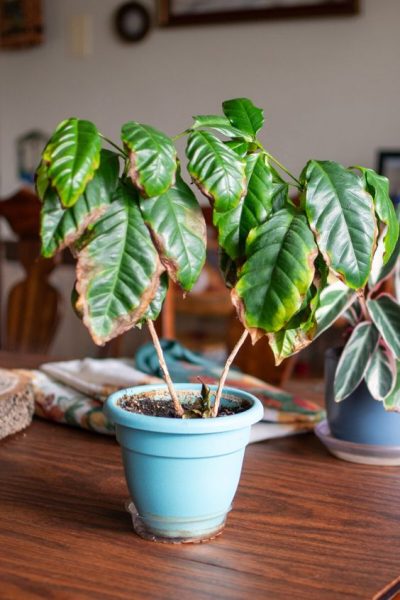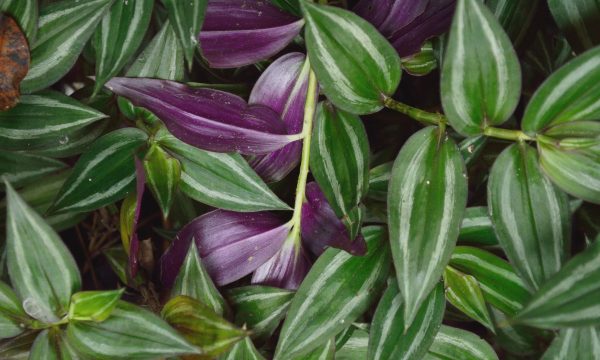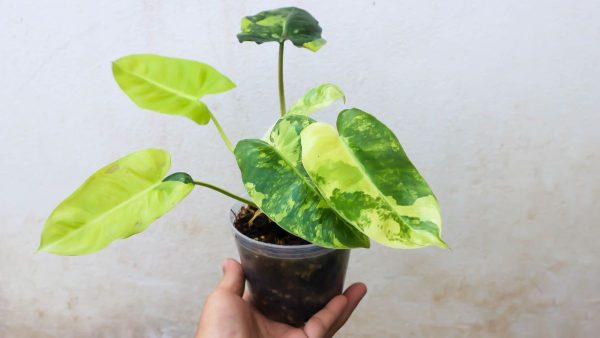Houseplants add beauty and fresh air to any home, but sometimes things go wrong, and the tips of the leaves turn brown.
So, in this article, we’ll explore the common reasons why this happens and how you can fix it to keep your plants looking vibrant and healthy.
Let’s begin!
The #1 Reason for Brown Tips on Houseplants

The number one reason for brown tips on houseplants is necrosis. In simple terms, necrosis is when parts of the plant’s cells die off prematurely.
This usually happens because the plant isn’t getting enough water or the water it’s getting contains too much salt or chemicals.
Plants also need the right environment to thrive; if it’s too hot or too cold, they might get stressed and show brown tips.
Keeping your home at a stable temperature and using a humidifier can help. When it comes to watering, balance is key.
Too much or too little water can cause problems, so use well-draining soil and adjust your watering schedule based on what the plant needs.
Hard tap water might leave harmful residues, so using distilled or rainwater can be better for sensitive plants.
Also, be careful with fertilizers; too much can harm your plant. Flushing the soil with clean water now and then can help remove any excess salts.
1. Overwatering
Firstly, brown tips on your houseplants’ leaves can be a distressing sign, often pointing towards overwatering.
When you overwater your plants, it can lead to various issues such as edema, where the plant absorbs more water than it can transpire, leading to blisters on the leaves that can burst and scar the foliage.
Also, overwatered plants might develop yellow or brown leaves, and in severe cases, the stems of the plants can become mushy; a sign of root and stem rot.
It also creates an environment that attracts pests like fungus gnats, which thrive in moist conditions and can further damage the plant by feeding on its roots.
Furthermore, constant wetness can lead to mold growth on the soil surface, negatively affecting the plant’s health.
Fix
You should consider the following solutions to overcome overwatering:
- Only water when the top 1-2 inches of soil are dry.
- Ensure pots have drainage holes and use soil that promotes drainage, such as those mixed with perlite.
- Water less frequently during cooler months and adjust based on your plant’s specific needs.
- Look for early signs of overwatering like soft stems or yellowing leaves and adjust watering accordingly.
- Keep the plant in an area with good airflow to help the soil dry more effectively.
- To reduce moisture retention, prefer breathable materials like terracotta over plastic or glazed containers.
2. Underwatering
When plants don’t receive enough water, the first signs are typically dry, crispy leaf tips which turn from yellow to brown.
This browning usually starts at the edges and works inward as the condition worsens.
The lack of adequate moisture causes the plant to pull water back from the leaf tips to more vital parts such as the stems and roots.
Another sign of underwatering is stunted growth. Plants that don’t get enough water are unable to perform photosynthesis efficiently and grow at a normal rate.
This can be particularly detrimental during the plant’s growing season, where ample water is crucial for development.
Underwatered plants also exhibit a brittle texture in their stems, and the soil often pulls away from the sides of the pot.
Fix
To prevent underwatering consider the following strategies:
- Firstly, determine the water needs of your plant and adhere to a consistent watering schedule.
- Select pots with good drainage and use a moisture-retaining yet well-draining soil mix.
- Change watering frequency based on seasonal changes and the plant’s growth phases.
- Use tools like moisture meters or wooden chopsticks to check soil moisture accurately.
- Manage temperature and humidity to minimize rapid water loss from the plants.
3. Pests
Some common pests include spider mites, mealybugs, and fungus gnats, each damaging the plant in different ways.
Spider mites, for instance, are tiny spider-like pests that feed on plant sap, causing leaves to turn yellow and die.
Mealybugs also suck plant juices, leading to weakened plants and potential death if untreated.
Fungus gnats, on the other hand, are more likely to harm young plants or seedlings by damaging roots.
Spider mites can be identified by the fine webbing they leave on plants, particularly under the leaves.
For control, using a neem oil spray effectively combats these pests. Also, apply neem oil regularly, even after the pests are gone, to prevent re-infestation.
Mealybugs are visible as small white fluffy spots on plants and can be removed using rubbing alcohol applied with a cotton bud.
To deal with fungus gnats, diatomaceous earth or yellow sticky traps can be used to control their population.
Fix
Solutions to Prevent Brown Tips on Houseplants
- Frequently check your plants for any signs of pests or disease.
- Tailor your watering habits to the specific needs of each plant.
- Maintain optimal humidity and temperature levels around your plants.
- Apply neem oil or insecticidal soaps to treat pests safely.
- Remove damaged leaves to prevent the spread of pests and diseases.
4. High Humidity
Many houseplants thrive in a moderate to high humidity environment, as they originate from humid tropical and subtropical regions.
When the air in your home is too dry, especially in centrally heated homes during winter, it can lead to moisture loss in plant leaves.
This moisture loss causes the leaf tips to dry out and turn brown. This is a defense mechanism where plants attempt to reduce their surface area to conserve water.
Furthermore, certain houseplants with thinner leaves are more susceptible to these symptoms because they lose moisture more rapidly.
On the other hand, too much humidity can also be detrimental, leading to problems such as powdery mildew or botrytis.
Fix
Consider these steps for high humidity:
- Creates a more humid microclimate through collective transpiration.
- Increases the air’s moisture level effectively.
- Place plants on trays with pebbles and water to boost humidity as water evaporates.
- Provides a quick humidity boost, especially beneficial for tropical plants.
- Helps regulate high humidity and prevents fungal growth.
5. High Heat
High heat is particularly prevalent in environments where the air is dry and the temperature is high, which can occur naturally in arid regions or artificially when air conditioning and central heating are used frequently.
High indoor temperatures increase the rate at which plants lose moisture through transpiration, exacerbating moisture loss at the leaf tips where it is hardest to replace.
Plants are also sensitive to direct sunlight, which can scorch their leaves, causing the tips to brown and crisp.
This is more common in plants placed near south-facing windows or in spots that receive intense midday sun.
Moreover, heated homes during winter can have low ambient humidity, which combined with high heat, further stresses the plants, leading to brown tips.
Another heat-related issue is the proximity of plants to heat sources like radiators or heating vents.
Direct exposure to heat can dry out the plants quickly, causing damage similar to that caused by low humidity and high room temperatures.
Fix
To mitigate the impact of high heat:
- Use humidifiers to maintain moderate humidity and temperature.
- Keep plants away from direct sunlight and heat sources like radiators.
- Group plants together or use water trays to increase surrounding humidity.
- Water plants when the soil feels dry, avoiding both overwatering and under-watering.

